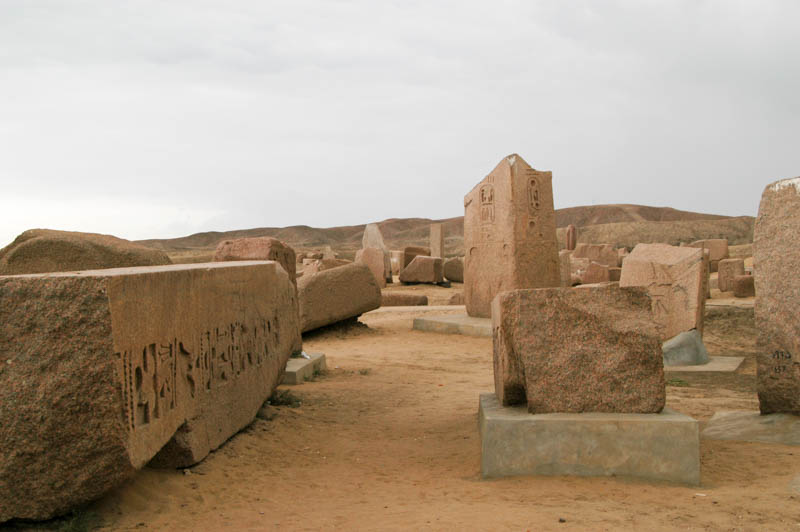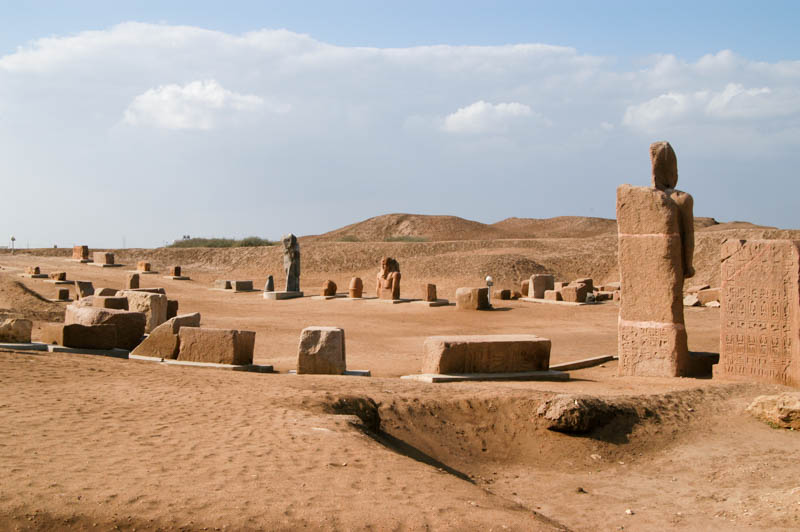
Tanis has come to resemble a huge used-car-lot of stone pieces and chunks of temples. Most of the remains are thought to be from the enormous Temple of Amun that was sited here. Only a few recognizable bits of the temple remain. To the south of the temple is the royal necropolis, which is not open to the public. In between is a hodge-podge of interesting stonework.
The main necropolis is ful of blocks, obelisks, broken columns, and many stones inscribed with the names of Khufu, Khephren, Titi, Pepi I and Pepi II, and from Senwosret. But — as we’ve begun to expect — most of the detritus here is marked from Ramesses II. There is nothing at Tanis to date any structures here to the periods of these kings, and it is assumed that everything was brought here later. kind of like a giant stone refuse dump.

Some of the structures here are odd conglomerations of blocks and columns, with no real rhyme or reason. Many fragments of statuary — including the scattered body parts of an enormous colossus. We found a knee, part of a foot, a shoulder, and part of the face. Some of the pieces are quite beautiful–the care and detail of even these enormous pieces is easy to see.
Surrounding the entire site is a mudbrick wall that is over ten meters tall and up to fifteen meters thick in some places. Only pieces of the wall remain, about 430 meters. Inside this huge wall is another mudbrick interior wall. Like many of the walls surrounding temples in Egypt, the wall undulates like water. Several of our guides explained that this was part of the overall symbolism of the temple buildings, the rising of the first land from the primordial sea.